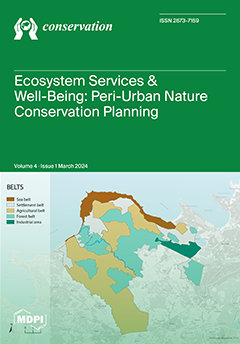Soils are a source of natural capital that provide and regulate a range of ecosystem services (ES) and play an important role in sustaining human welfare. Nonetheless, the quality and quantity of soil ecosystem services (SES) delivery over the long term depend on
[...] Read more.
Soils are a source of natural capital that provide and regulate a range of ecosystem services (ES) and play an important role in sustaining human welfare. Nonetheless, the quality and quantity of soil ecosystem services (SES) delivery over the long term depend on the use of sustainable land management practices. In the present study, we assessed seven SES using a set of soil quality indicators in four production systems based on yerba mate (
Ilex paraguariensis A. St.-Hil) in the Araucaria Forest biome of Southern Brazil: two sites were under traditional agroecological agroforestry management, one was a silvopastoral system with dairy pasture, and the last one was a monoculture yerba mate production system. The SES measured were soil fertility, carbon sequestration, erosion control, nutrient cycling, plant provision, biodiversity, and health. Soil samples were collected at various depths and analysed for chemical, physical, and biological attributes. A principal component analysis on the dataset showed that the soil quality indicators that best represent the variance between the systems at the 0–10 cm layer were acidity, microbial activity (FDA), total nitrogen, (TN), structural stability index (SSI), cation exchange capacity (CEC), pH, sum of bases (SB), microbial quotient (qMic), density of earthworms (EwD), bulk density (BD), and carbon stocks (C
stock). Soil quality indicators ranging from 0 to 1 were used to graphically represent the set of SES. The indicator-based approach used to explain the differences among the four production systems was able to capture the soil functions and offered a good starting point for quantifying SES provision.
Full article




